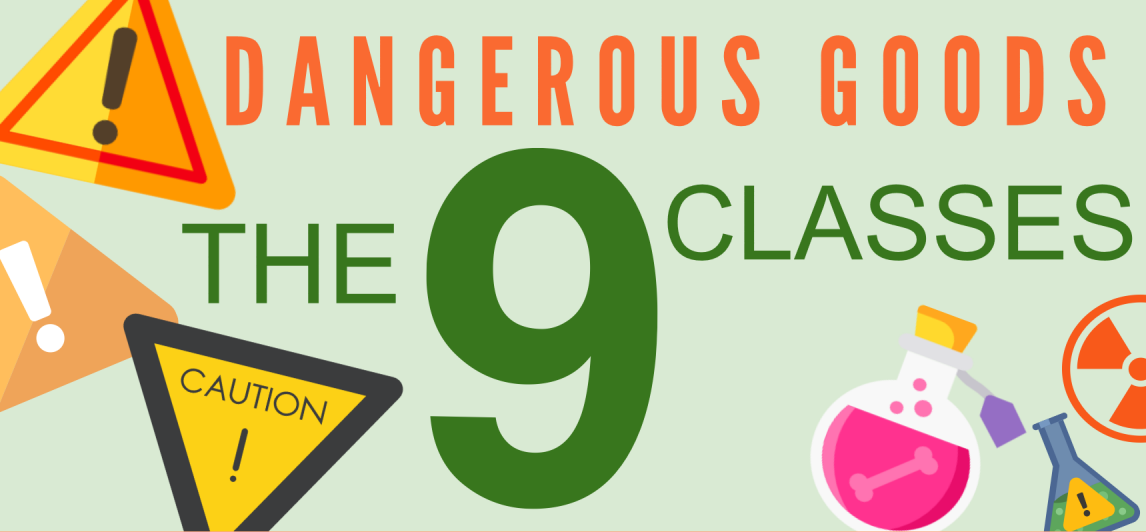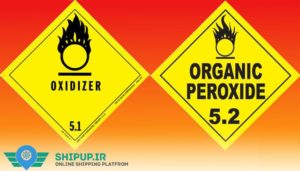The 9 Classes of dangerous goods
Dangerous goods are materials or items with hazardous properties which, if not properly controlled, present a potential hazard to human health and safety, infrastructure and/ or their means of transport.
Regulatory frameworks incorporate comprehensive classification systems of hazards to provide a taxonomy of dangerous goods. Classification of dangerous goods is broken down into nine classes according to the type of danger materials or items present, click on a class to read more details;
- Explosives
- Gases
- Flammable Liquids
- Flammable Solids
- Oxidizing Substances
- Toxic & Infectious Substances
- Radioactive Material
- Corrosives
- Miscellaneous Dangerous Goods
CLASS 1 – EXPLOSIVES
Explosives are materials or items which have the ability to rapidly conflagrate or detonate as a consequence of chemical reaction.
CLASS 2 – GASES
Gases are defined by dangerous goods regulations as substances which have a vapor pressure of 300 k Pa or greater at 50°c or which are completely gaseous at 20°c at standard atmospheric pressure, and items containing these substances. The class encompasses compressed gases, liquefied gases, dissolved gases, refrigerated liquefied gases, mixtures of one or more gases with one or more vapors of substances of other classes, articles charged with a gas and aerosols.
CLASS 3 – FLAMMABLE LIQUIDS
Flammable liquids are defined by dangerous goods regulations as liquids, mixtures of liquids or liquids containing solids in solution or suspension which give off a flammable vapor (have a flash point) at temperatures of not more than 60-65°C, liquids offered for transport at temperatures at or above their flash point or substances transported at elevated temperatures in a liquid state and which give off a flammable vapour at a temperature at or below the maximum transport temperature.
CLASS 4 – FLAMMABLE SOLIDS; SUBSTANCES LIABLE TO SPONTANEOUS COMBUSTION; SUBSTANCES WHICH EMIT FLAMMABLE GASES WHEN IN CONTACT WITH WATER
Flammable solids are materials which, under conditions encountered in transport, are readily combustible or may cause or contribute to fire through friction, self-reactive substances which are liable to undergo a strongly exothermic reaction or solid desensitized explosives. Also included are substances which are liable to spontaneous heating under normal transport conditions, or to heating up in contact with air, and are consequently liable to catch fire and substances which emit flammable gases or become spontaneously flammable when in contact with water.
CLASS 5 – OXIDIZING SUBSTANCES; ORGANIC PEROXIDES
Oxidizers are defined by dangerous goods regulations as substances which may cause or contribute to combustion, generally by yielding oxygen as a result of a redox chemical reaction. Organic peroxides are substances which may be considered derivatives of hydrogen peroxide where one or both hydrogen atoms of the chemical structure have been replaced by organic radicals.
CLASS 6 – TOXIC SUBSTANCES; INFECTIOUS SUBSTANCES
Toxic substances are those which are liable either to cause death or serious injury or to harm human health if swallowed, inhaled or by skin contact. Infectious substances are those which are known or can be reasonably expected to contain pathogens. Dangerous goods regulations define pathogens as microorganisms, such as bacteria, viruses, rickettsiae, parasites and fungi, or other agents which can cause disease in humans or animals.
CLASS 7 – RADIOACTIVE MATERIAL
Dangerous goods regulations define radioactive material as any material containing radionuclides where both the activity concentration and the total activity exceeds certain pre-defined values. A radionuclide is an atom with an unstable nucleus and which consequently is subject to radioactive decay.
CLASS 8 – CORROSIVES
Corrosives are substances which by chemical action degrade or disintegrate other materials upon contact.
CLASS 9 – MISCELLANEOUS DANGEROUS GOODS
Miscellaneous dangerous goods are substances and articles which during transport present a danger or hazard not covered by other classes. This class encompasses, but is not limited to, environmentally hazardous substances, substances that are transported at elevated temperatures, miscellaneous articles and substances, genetically modified organisms and micro-organisms and (depending on the method of transport) magnetized materials and aviation regulated substances.
Focus on your core business with Visiwise


